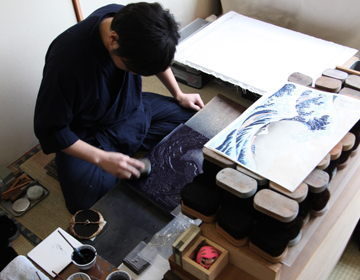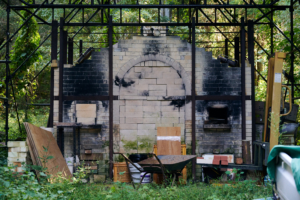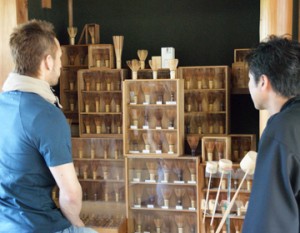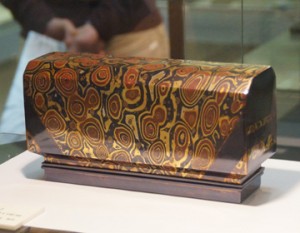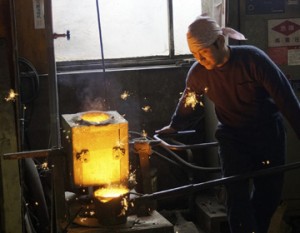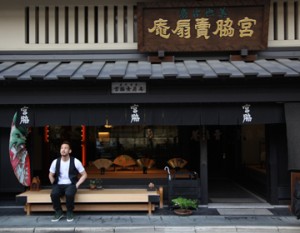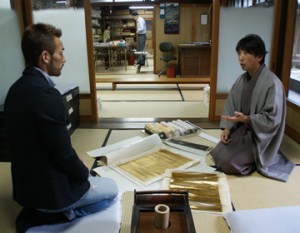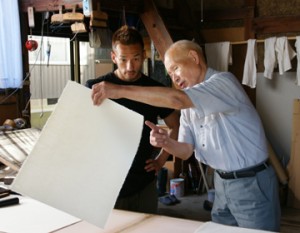Culture to enjoy the times
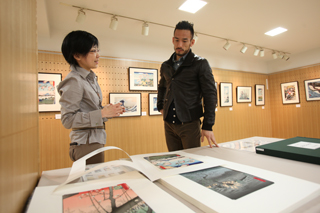
Ukiyo-e. There are fans and collectors all over the world, and it is one of the leading arts of Japan. It prospered during the Edo period and was popular among the commoners. Originally, the word ”Ukiyo-e” derived from the word ”uki yo”, expressing concern towards reality and how the world is full of lament. Later in the Edo period, the world became peaceful and the word was altered to ”ukiyo,” meaning ”to enjoy the times”.
Ukiyo-e reflects the present. It shows the trends of the particular time, such as Kabuki performers, beautiful women, scenes from travel, etc. Many Ukiyo-e were woodcut prints. During the Edo period, there were painters, carvers, and printers, all associated with the making of Ukiyo-e. Work was completed more quickly by dividing the process. Today, there is a company in Shinjuku, Tokyo that still creates Ukiyo-e. Since its establishment in 1928, they have reproduced numerous Ukiyo-e prints, passing on the culture to the present. THis is THe Adachi Institute of Woodcut Prints.
Making the Woodcut for Ukiyo-e
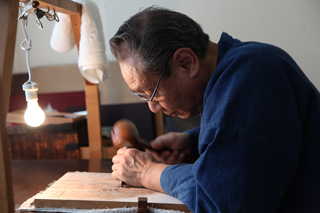
”Popular prints were often used for printed materials and commercialized, so many prints were made, some to the point that the woodblocks were worn down. Additional editions were often printed. Famous Ukiyo-e were printed numerous times, and the woodcuts shrank and wore out, eventually causing the colors to shift or become patchy. That is why the first editions generally have more value.”
Shu Nakayama of The Adachi Institute of Woodcut Prints explained. ”The Japanese traditional woodcut prints is an art, created as a collaboration of the artist, carver, printer, and the publisher who acts as the producer.”
The Adachi Institute of Woodcut Print is the publisher, or the producer, according to Nakayama, but they also create Ukiyo-e, with several carvers and printers on the premises.
They reproduce Ukiyo-e from the Edo period, trying to preserve and develop the skills of woodblock carving.
Trying the printing

We observed the ”printing process” after hearing the explanation. Before our very eyes, ”Thirty-six Views of Mt. Fuji, Big Waves off Kanagawa” of Katsushika Hokusai is printed. The most difficult part is to keep the 2 registrations marks, ”kento”, on the woodblocks in line to keep it from slipping out of position. Nakata gave it a try and found it was extremely difficult to fit the paper in its place.
The most important procedure of Ukiyo-e is ”kimekomu”. The artisans swiftly move their ”baren” over the paper, making it seem quite easy, but it actually requires a lot of strength. WIthout the right amount of pressure, the color will not be projected.
The artisan has multiple ”baren” in their hands. Each is made of woven rope made from bamboo skins. There are coarse ones made with 2 bamboo braids, and fine ones made with 4 braids. When a wide surface needs to be printed, the coarse ”baren” is used, and the various types are used differently according to the wooden blocks. ”Baren” specialists are scarce, so the artisans themselves have had to make their own.
Challenges for the Modern Ukiyo-e
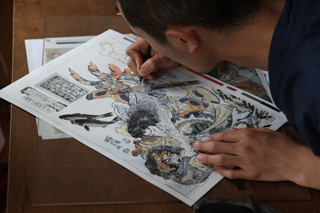
”Since Ukiyo-e was purchased by the masses, availability was based on the level of productivity. But to think commoners had access to such high quality art!”
Edo Ukiyo-e, which even captivated the heart of artists like Van Gogh, is indeed art for the common people. The Adachi Institute of Woodcut Print nurtures new artisans as well, and carvers and printers work diligently to develop their skills. They also work with current artists to create a new type of Ukiyo-e.
There are things that come to life when traditions and skills are contrasted with the ”present”. Efforts to create new Ukiyo-e which express the appeal of woodblock prints in every way have gained recognition. There is great anticipation for new Ukiyo-e creations, the pride of our country.


